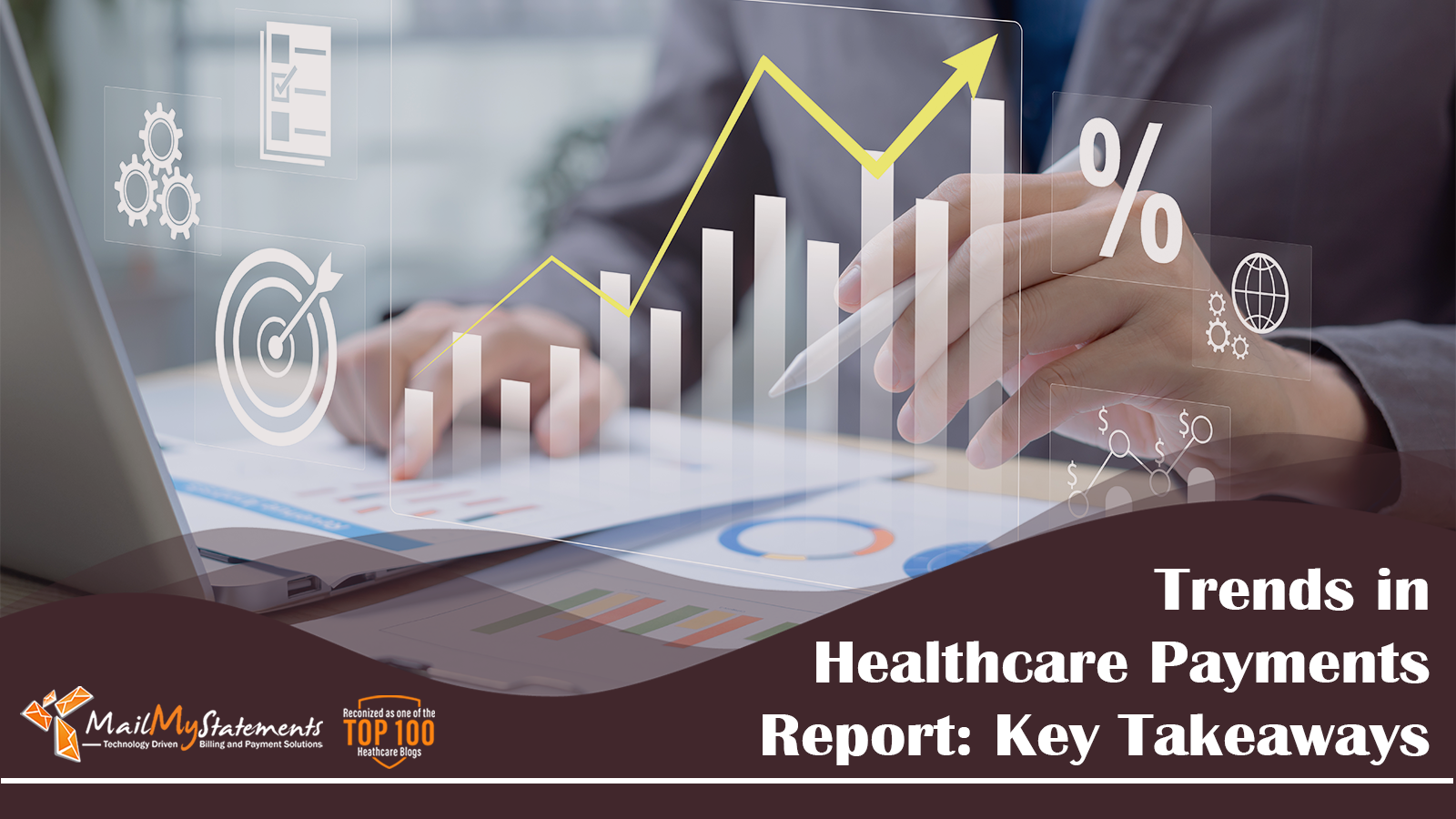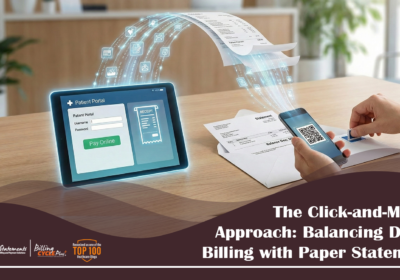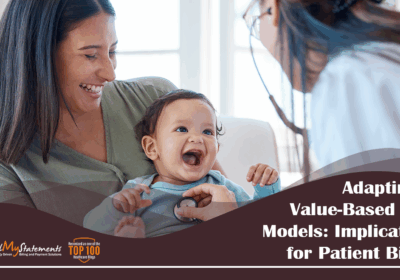Trends in Healthcare Payments Report: Key Takeaways

The annual Trends in Healthcare Payments report by J.P. Morgan is an excellent resource for any organization involved in healthcare billing, whether a billing service, a large hospital system, or an individual doctor’s office. We’ve conducted a deep dive into the 2025 report to extract key insights into the evolving landscape of healthcare payments.
Below, you’ll find the key insights from this report that are most relevant to your role in medical billing. This information includes insights into the future of payment processes, consumer preferences, and the best opportunities to make your operations more efficient. The primary takeaway is the urgent need for healthcare organizations to adopt digital payment solutions and deliver a more consumer-centric payment experience, ultimately enhancing both operational efficiency and patient satisfaction.
Overview of the Healthcare Payments Landscape
The healthcare industry has reached a pivot point, and payment processes are a critical area for transformation.
Even in our current digital age, 68% of payers still reimburse providers with paper checks. (This number increased by 8 percentage points since 2023!) Indeed, the continued reliance on paper-based processes creates friction for patients and providers; 72% of consumers under the age of 35 report switching providers or considering doing so for a better payment experience alone.
Patient collections are an increasing concern for providers, and 71% of them report that it takes over 30 days to collect payments. Medical billing services can play an important role in addressing these challenges by streamlining payment collection, improving transparency, and helping providers adopt digital tools that better meet consumer expectations.
The report estimates that fully electronic workflows have the potential to save the healthcare industry $20 billion annually. When considering the additional time savings for providers and patients, it’s clear that moving to more modernized payment systems will yield big payoffs.
Key Challenges in Payment Processes
The report identifies several pain points in healthcare payment processes that can be addressed by a more modern payment process.
- Slow Collection Times: On average, it takes providers up to 90 days to collect patient balances, with 38% reporting 31–60 days and 19% reporting 91–120 days. In addition, 79% of providers require two or more statements to collect a patient balance in full, with 38% needing three or more statements. Each additional statement increases administrative costs, and every day that a balance is unpaid further strains cash flow. Clearly, there is a need for billing services to decrease the turnaround time for payments.
- Paper-Based Processes: Despite the availability of digital solutions, paper checks remain prevalent. Only 34% of providers are significantly reducing cash and paper-based payments across all locations. This reliance on outdated methods adds complexity and cost, which billing services can mitigate by facilitating easier electronic payment options.
- Patient Refunds: Nearly all healthcare providers have to issue refunds for overpayments, with a significant portion doing so frequently; 91% of providers report issuing refunds, and 22% report doing so often. The slow refund process is a source of frustration for patients, with 48% reporting that the lack of urgency is the most aggravating aspect of provider refunds. Billing services can optimize refund workflows, but they can also ensure accurate billing in the first place to minimize overpayments. When refunds are necessary, digital refund options can be a much faster means of getting that money back into the pocket of the patient.
- Price Transparency and Large Balances: Only 24% of providers prioritize increasing price transparency, despite strong consumer demand for knowing costs upfront. Additionally, 50% of consumers have received medical bills exceeding $400. Given these conditions, it’s no wonder that 63% of providers struggle with collecting large patient balances and 43% face challenges from bad debt due to uncollected balances. Billing services can address these issues by integrating cost estimation tools and flexible payment plans into their offerings.
Consumer Payment Preferences
The J.P. Morgan report also provides consumer sentiment data, which gives us critical insights into how healthcare providers can improve their billing processes to increase patient satisfaction.
- Preferred Payment Methods: 62% of consumers prefer to pay medical bills online, via their provider’s, health plan’s, or bank’s website or a digital wallet, reflecting a strong shift toward digital channels. Only 6% prefer to make payments by dropping a check in the mail; this aligns with broader trends, with just 17% of consumers mailing paper payments for regular household bills. In light of these statistics, healthcare providers must prioritize online payment portals and digital wallets to meet consumers where they’re at. Aligning with patient preferences will go a long way towards improving collection rates.
- Payment Plans and Financing: While it’s encouraging that 53% of consumers have never delayed or skipped paying a medical bill due to limited payment options, 20% report having done so at times, and 6% frequently. Additionally, 73% of consumers are somewhat or very likely to use a no-fee, no-interest payment plan when offered, with 2% already doing so. However, 60% would not use financing options with fees or interest, though 16% used such options in the past year due to large bills with no alternatives. These findings suggest that healthcare providers would benefit from offering flexible, no-cost payment plans to facilitate timely payments and reduce bad debt.
- Explanation of Benefits (EOB) Confusion: Consumers frequently find EOBs from health plans confusing, which complicates their understanding of their financial responsibilities. One way a billing service can be valuable to healthcare providers is by offering clear, patient-friendly billing statements and integrating EOB explanations into their platforms.
- Switching Providers for Better Payment Experiences: How much does payment experience matter? So much so that 34% of consumers are somewhat likely, and 15% are very likely, to switch providers for a better payment experience. (Only 23% are not likely at all to switch.) This underlines the fact that there is a competitive advantage for providers who partner with billing services that offer seamless, transparent payment processes.
Opportunities for Healthcare Providers
The report highlights several opportunities for providers to enhance and streamline their payment processes.
- Promoting Digital Payment Solutions: Billing services allow providers with limited resources to implement secure, user-friendly online payment platforms that support debit/credit cards, digital wallets, and eChecks. Automated payment options, which are preferred by 63% of consumers for health plan premiums, can further streamline collections.
- Streamlining Administrative Workflows: Electronic workflows can save an average of 70 minutes per patient visit. Billing services allow providers to integrate electronic statements and automated payment tools, reducing administrative time and costs.
- Enhancing Price Transparency: By offering tools that provide accurate cost estimates before visits, billing services address consumer demand for transparency, reduce billing disputes, and improve patient satisfaction.
- Supporting Payment Plans: Offering no-fee payment plans addresses the challenge of large patient balances, aligning with the 73% of consumers open to such plans. This can reduce bad debt and improve cash flow for providers.
- Reducing Refund Friction: Billing services minimize overpayments by improving billing accuracy and offering electronic refund options to replace paper checks, alleviating patient frustration over the slow refund process.
Partnering with MailMyStatements can help you take advantage of these opportunities, all while increasing your cash flow and patient satisfaction at the same time.
Conclusion
For healthcare professionals, the 2025 Trends in Healthcare Payments report underscores the urgent need to modernize payment processes in order to meet consumer expectations and enhance provider efficiency. The findings are clear: patients increasingly expect digital payment options, flexible payment plans, and greater price transparency. By adopting these solutions, providers not only meet patient demands but also benefit from streamlined administrative workflows, faster collections, and reduced bad debt.
Although adopting these solutions offers clear benefits for both providers and patients, many organizations hesitate due to the perceived complexity of implementation. MailMyStatements simplifies this transition, helping you remain competitive in a rapidly evolving healthcare landscape by streamlining electronic workflows and enabling more consumer-centric payment experiences.
To learn more about our services, schedule a demo today.
![]()



